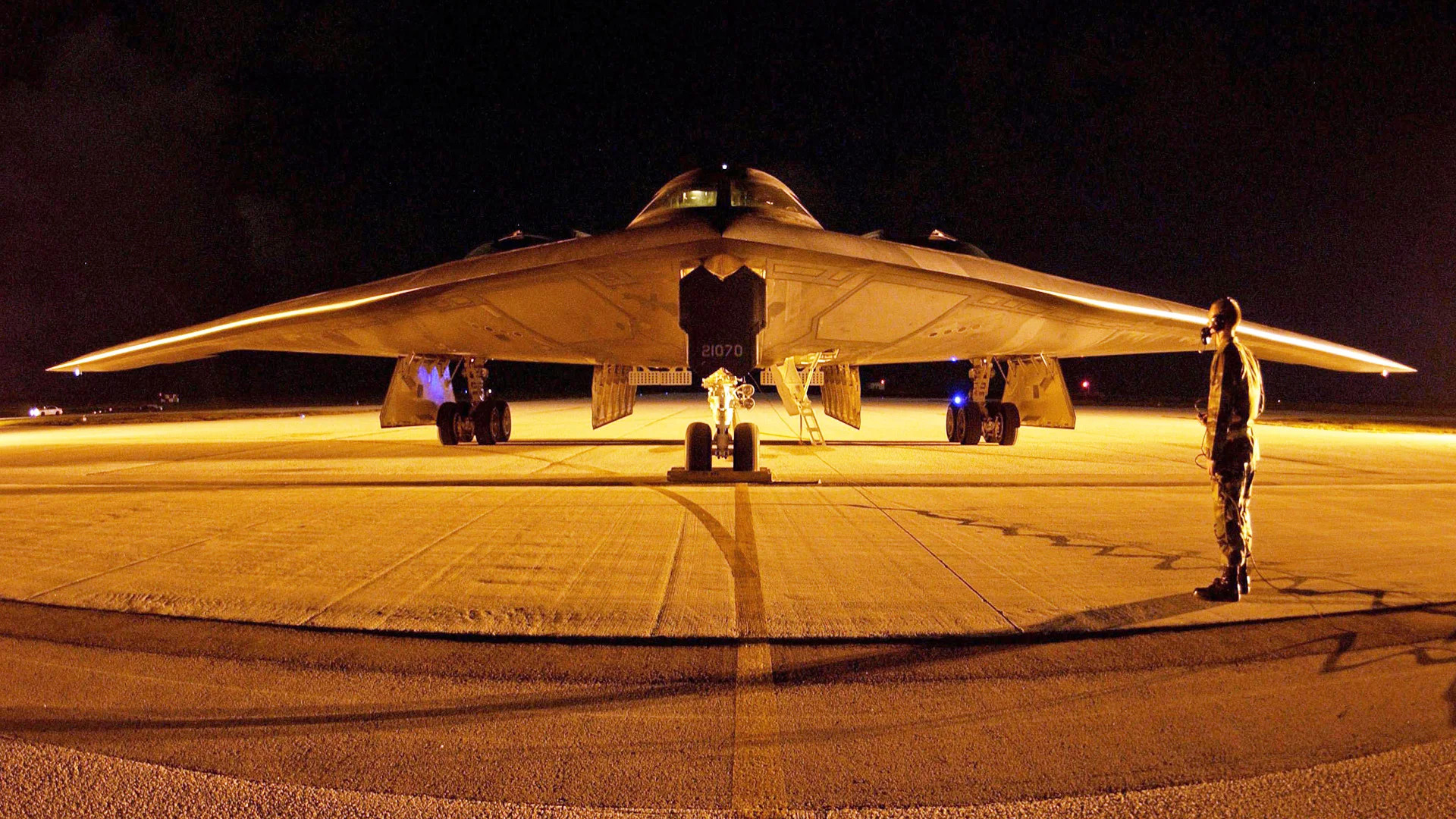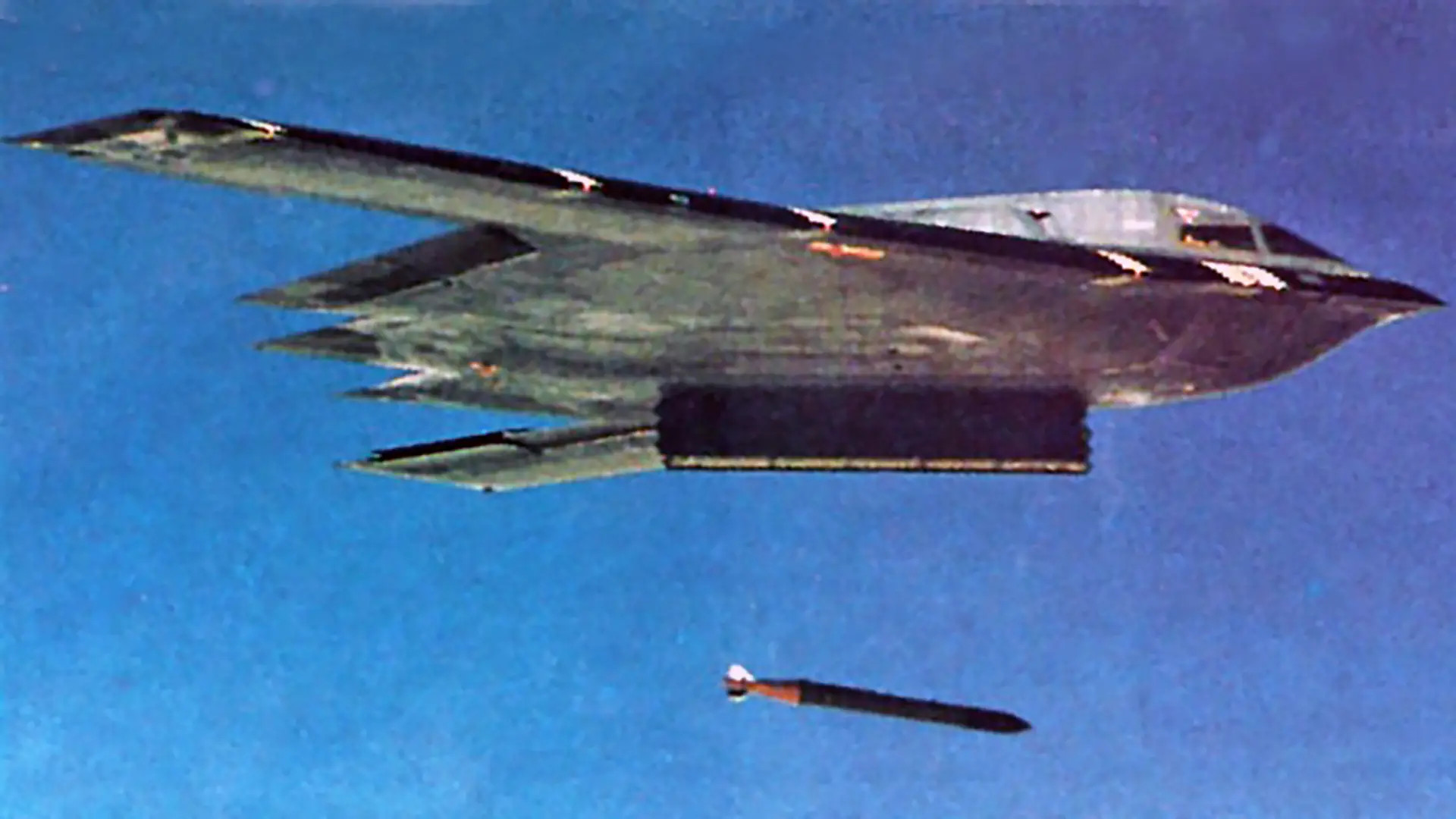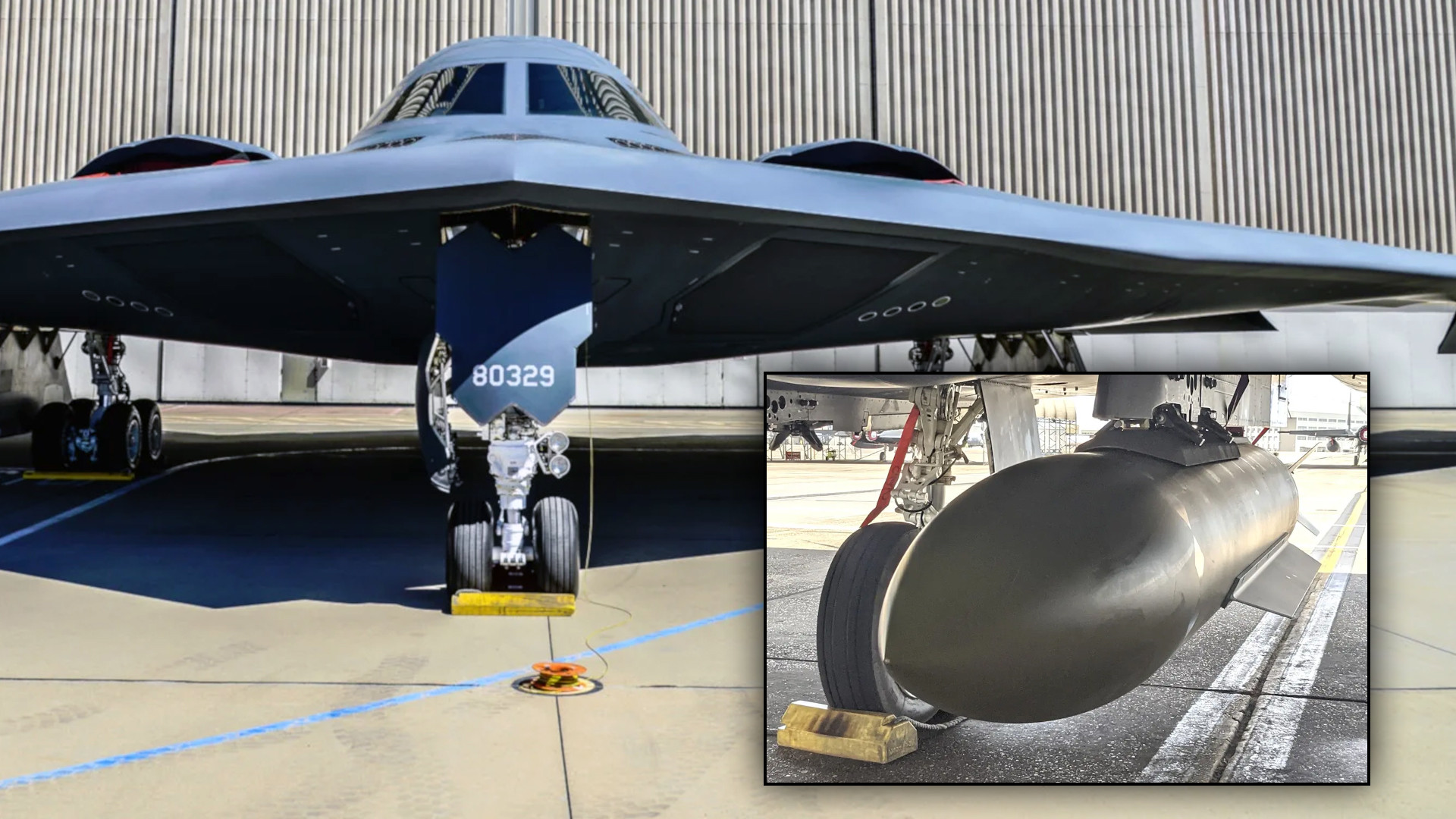U.S. Air Force’s new 5,000-pound-class GBU-72/B bunker buster bomb could be a future addition to the B-2 Spirit stealth bomber’s arsenal. The service is eying integrating the GBU-72/B and other unspecified “advanced weapons” on the B-2 as part of continued upgrade work on those bombers ahead of the introduction of the new B-21 Raider. The GBU-72/B first emerged publicly in 2021.
The Air Force Life Cycle Management Center’s (AFLCMC) B-2 bomber division highlighted the possible future integration of the GBU-72/B onto the B-2 in a so-called Justification and Approval (J&A) document regarding a planned blanket upgrade and modernization sole-source contract award to Northrop Grumman. U.S. government agencies have to submit justifications like this for approval to award contracts without a typical competitive bidding process. AFLCMC released a redacted copy of this J&A document online on May 6, three days after Northrop Grumman was awarded the contract in question, which has a cost ceiling of $7 billion.

The unredacted portions of the J&A document list several planned and potential upgrade efforts for the B-2 as part of laying out its case for Northrop Grumman as being the only realistic candidate to do this work. Northrop (which merged to form Northrop Grumman in 1994) built these bombers starting in the late 1980s and has been in charge of sustaining them ever since. “Advanced Weapons Integration (e.g., A5K)” is among the potential “Candidate B-2 Modernization Efforts” that could now be covered under the new upgrade contract.
A5K is the Air Force’s abbreviation for Advanced 5,000 Pound Penetrator. This refers specifically to the BLU-138/B 5,000-pound class bomb that forms the core, or “warhead,” of the complete GBU-72/B. The GBU-72/B also includes a Joint Direct Attack Munition (JDAM) family GPS-assisted guidance kit. To date, the Air Force is only known to have conducted flight testing of these new bombs loaded onto F-15E Strike Eagles.

The Air Force expects the development of the GBU-72/B to wrap up in the current fiscal year and for these weapons to ultimately supplant the service’s existing GBU-28/B 5,000-pound-class bunker buster bombs. The GBU-28/B is a member of the Paveway family of laser-guided bombs that was rushed into service in the lead-up to the Gulf War in 1991, where it made its combat debut. The initial run of these bombs was made in part from the barrels of retired U.S. Army 203mm howitzers.

An enhanced version of the GBU-28/B was also subsequently developed that added a GPS-assisted guidance mode. This bomb supplanted the 5,000-pound-class GBU-37/B GPS Aided Munition (GAM) bunker buster bomb in the B-2’s arsenal. You can read more about the GAM family of bombs, which preceded the now ubiquitous JDAM series, here. The only other aircraft currently authorized to employ any variant of the GBU-28/B are the Air Force’s F-15E Strike Eagles.

“With enhanced survivability, increased lethality, smart fuzing, and utilization of fielded JDAM Navigation tailkits, the GBU-72 significantly improved performance reducing the number of weapons required to achieve a kill at lower AUR cost,” according to the Air Force’s 2025 Fiscal Year budget request. The A5K bombs having GPS-assisted guidance only means they are limited to engaging static targets. At the same time, the target sets the new bomb is optimized for – tunnels, bunkers, and other deeply buried and hardened facilities – are also not mobile.

The GBU-72/B also ensures the Air Force will continue to have a conventional bunker buster bomb in between smaller 2,000-pound-class types and the huge 30,000-pound-class GBU-57/B Massive Ordnance Penetrator (MOP). The service’s stockpile of MOPs is understood to be very small and reserved for use against very high-priority targets. The B-2 is also the only aircraft currently certified to employ those weapons, and their size means a single bomber can only carry two of them at once.

B-2s have substantial capacity to carry smaller munitions in its two weapons bays, including up to 80 500-pound-class JDAMs, and would be able to carry multiple GBU-72/Bs on a single sortie. Combined with the stealthy bomber’s ability to penetrate deep into denied areas, this would offer a valuable conventional option for striking at multiple hardened sites more rapidly or for maximizing effect more immediately on a limited group of targets.

It remains to be seen how and when the GBU-72/B might be integrated onto the B-2. As the J&A document the Air Force released yesterday notes, this is just one potential “advanced weapon” that could get added to the B-2’s arsenal in the coming years. This might also include hypersonic missiles now under development. The B-2 fleet is not currently slated to receive the future AGM-181A Long Range Stand-Off (LRSO) nuclear-armed air-launched cruise missile before its retirement. The Air Force expects to begin supplanting B-2s, as well as its swing-wing supersonic B-1s, with new B-21s sometime in the 2030s. It is very possible that the GBU-72/B could find its way into the Raider’s future arsenal, as well.
Whatever the case, the Air Force’s B-2 fleet is set to continue receiving substantial upgrades throughout at least the rest of this decade. Even with the B-21’s introduction steadily approaching, the B-2s, which could be armed with GBU-72/Bs in the future, still have many more years of expected service left.
Contact the author: joe@twz.com
